the string skirt project
fundamental weaving and design elements
When I teach the World History of Art through Handspinning Workshop (which honestly is my favorite) I bring up the String Skirt.1 It is an idea as well as a garment which has been found all around the world.
Somewhere in time, someone from a hunter/gatherer community looped a few precious lengths of string over a longer bit of string and tied it around her waist. It was not a garment, it did not provide warmth or modesty, in fact it functioned more like a tool belt. She had string and now her hands were free. If she found a big bunch of leeks or flowers she could gather them and use some of her strings to tie them up and carry them back to the community. It was also ornamental. The strings swayed as she walked, emphasizing her gait and her figure.
In burials, tombs and pre-industrial sites all over the world evidence of this type of garment have been uncovered. The skirts/aprons also appear in lovely little statues carved from stone or bone and found literally on every continent. These (so called) Venus figures are abstract figures, with exaggerated breasts and hips. Some are completely nude, but many have lines etched around the waist and hips in the fashion of the string skirt.
Over time, the string garment has evolved into functional and decorative garments, such as aprons and ceremonial skirts, recognized through the ages as symbols of female powers and responsibilities. In most (so called) Traditional Costumes the female garments include something that wraps around the waist and hips and communicates information about the wearer’s status, her community and vocation.2 Anthropologist have sometimes shorten this concept to “fertility talisman” or some such title. I am rolling my eyes as I type this, just so you know.
I am particularly fascinated by the Bronze Age corded skirts found in burial sites though out Scandinavia. This is not the only place corded skirts have been found, but the concentration in one area makes them significant.3 The best known, is probably the Egtved Girl Corded Skirt.4
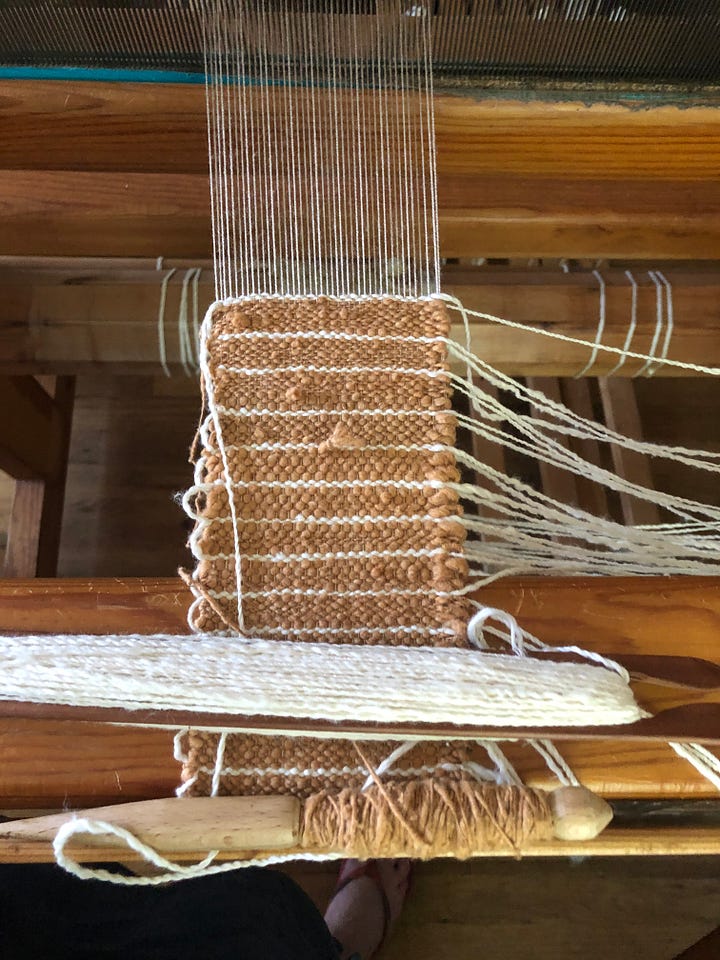
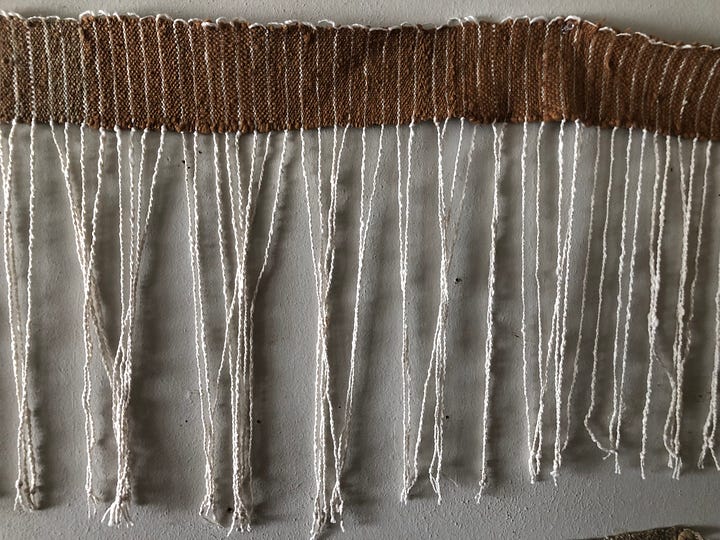

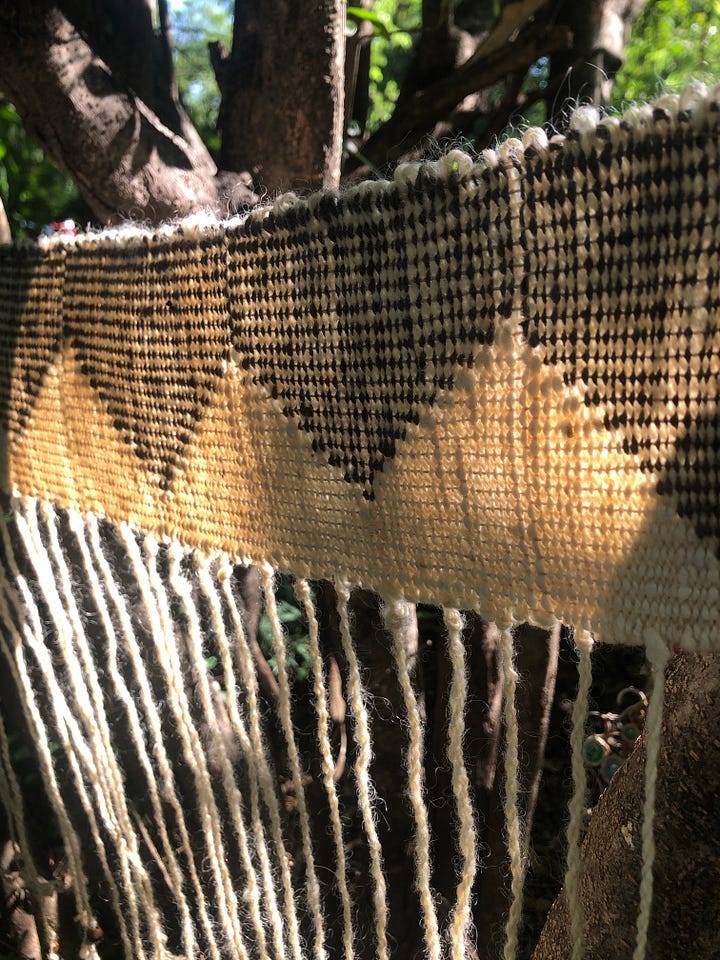
A few years ago, I experimented with weaving on a warp weighted loom, and that experiment led me to try my hand at a few String Skirts. The process is not unlike the band one weaves to start a warp on a warp weighted loom. I can see how the string skirt could morph into an apron, or even a whole garment.
It is messy, but fun, to weave and my cat’s favorite project. Here are a few photos of the process and the finished garments. What will be become of them? I have some ideas, but in the meantime, I enjoy hanging them in my garden.
I know you were just waiting for me to start quoting Women’s Work the First 20,000 Years by Elizabeth Wayland Barber. I rarely speak about spinning or weaving without referencing her scholarly work.
Here is a lovely description of the evolution of the Ribbon Skirt, associated with indigenous people in North America.
Scholarly analysis of the Ginderup Burial skirt which has disappeared since it was excavated in the 1930s. What a mystery!
Probably more than you will ever need to know about the Egtved Girl, quite an interesting article.


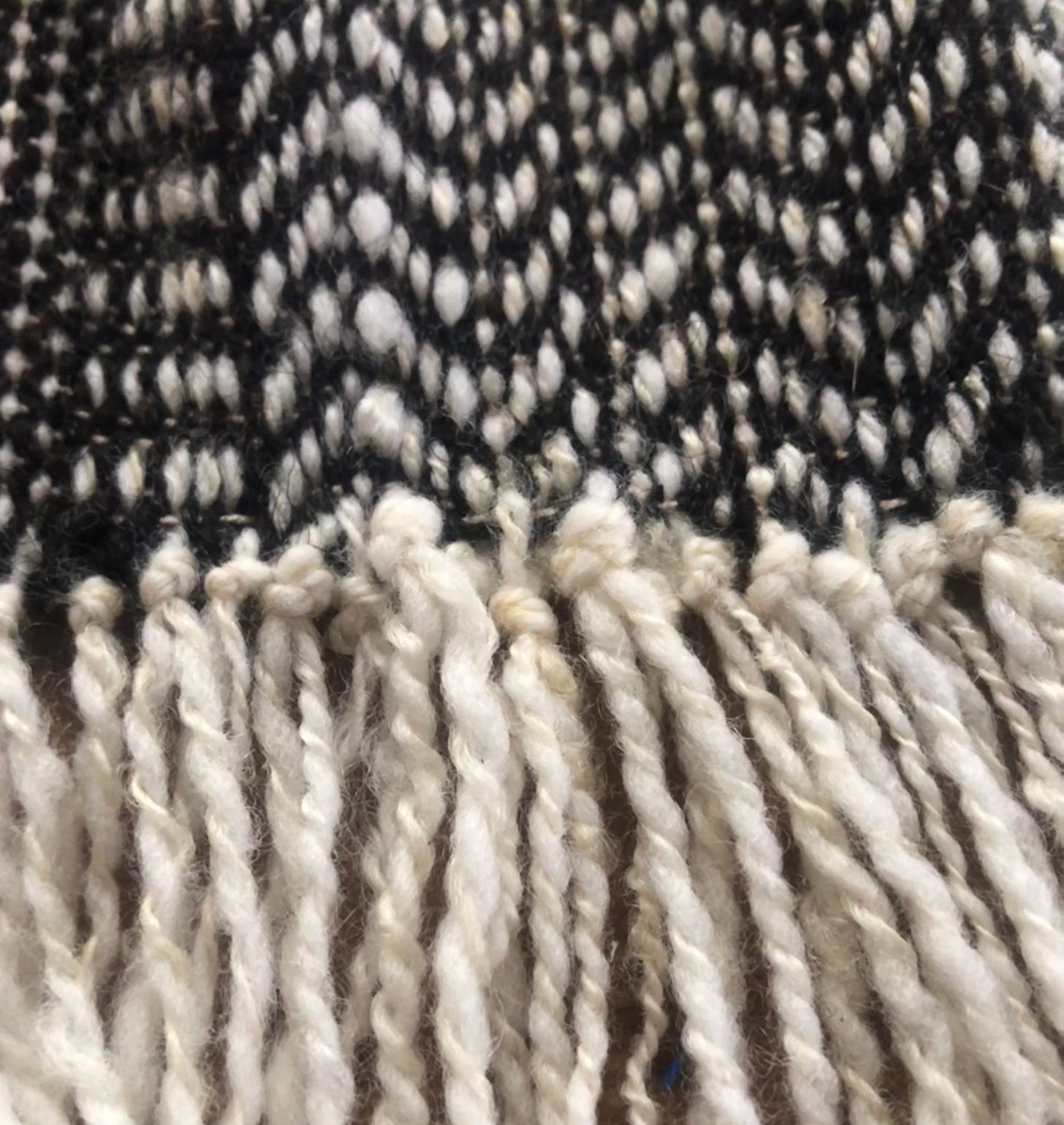
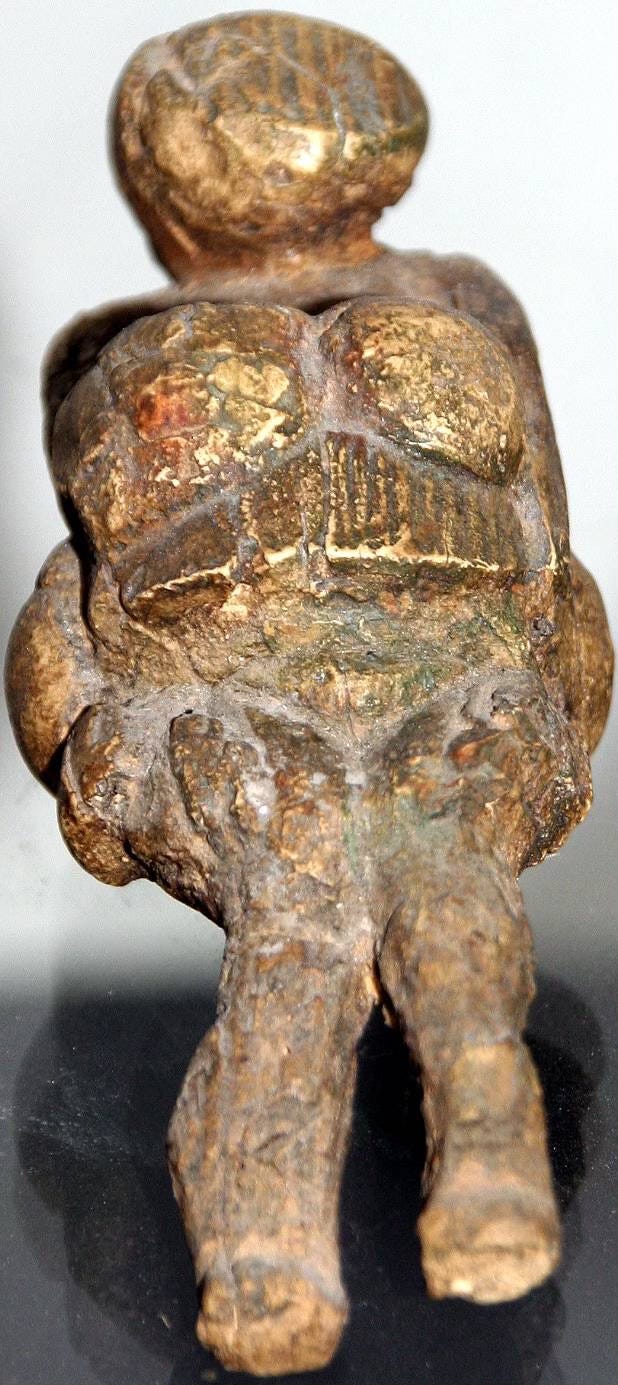
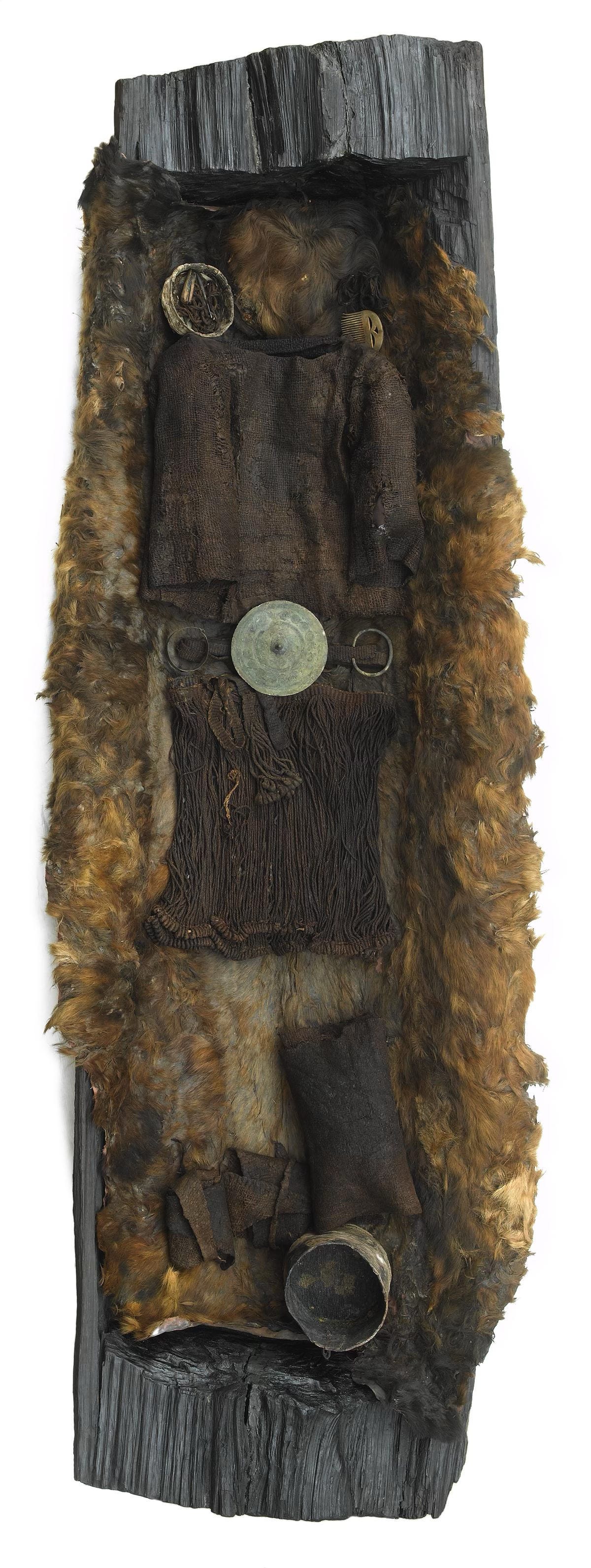
Love this- makes me think of ribbon skirts I’ve learned about from indigenous friends. Lovely article, June. I enjoy your light and deeply rooted style! ❤️